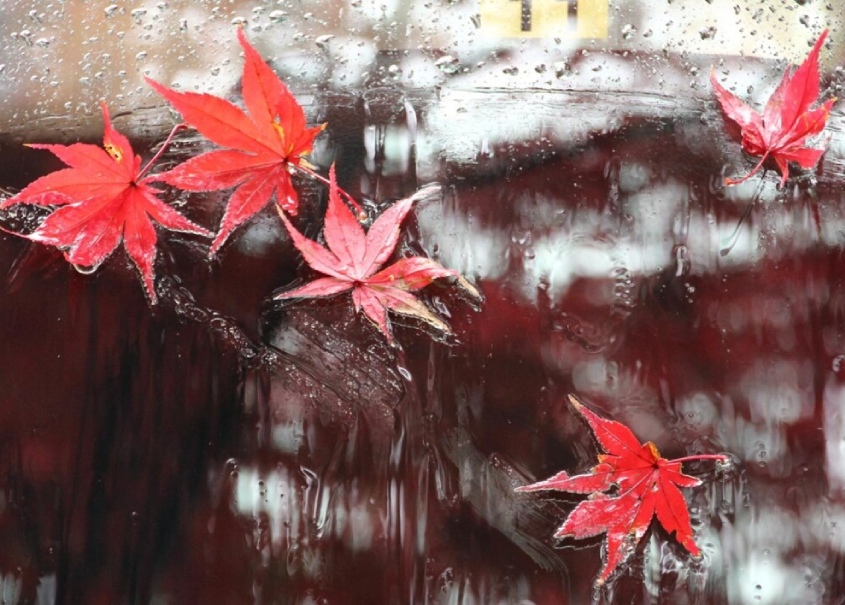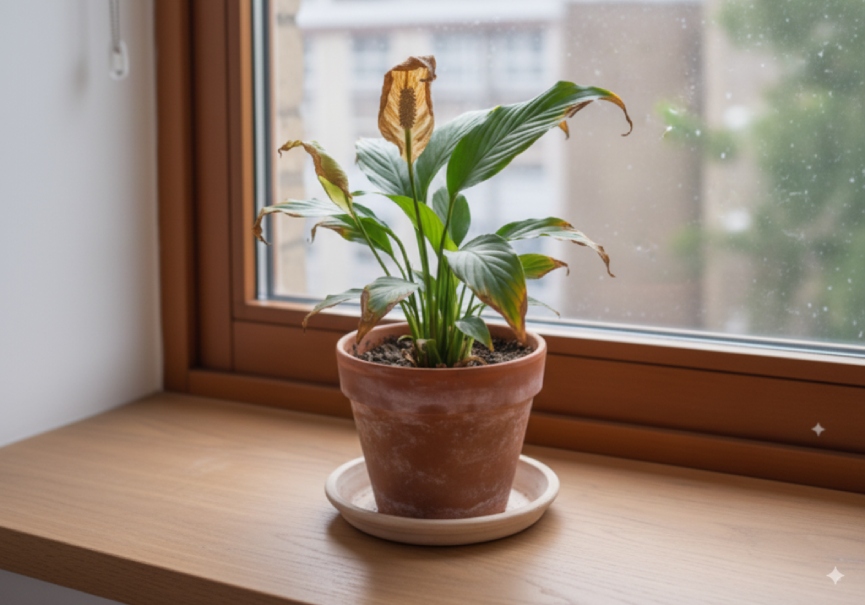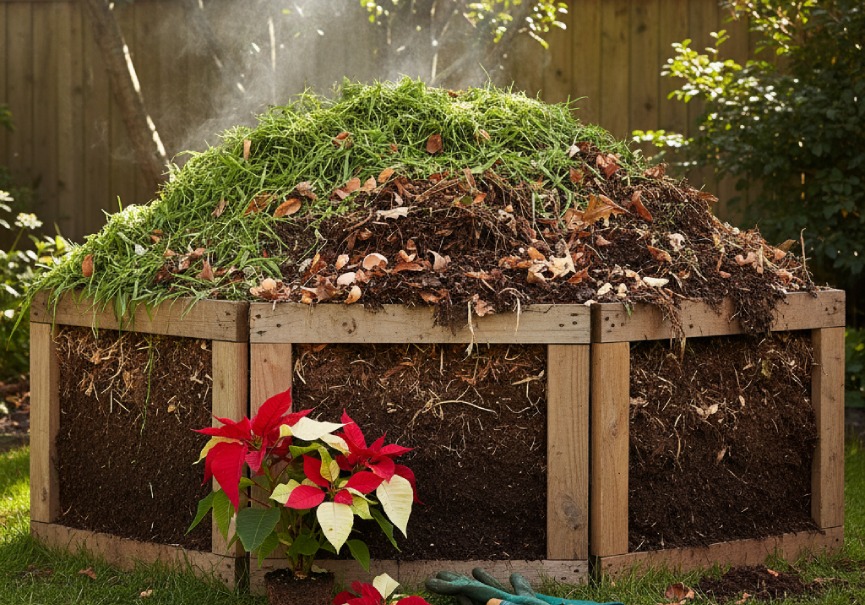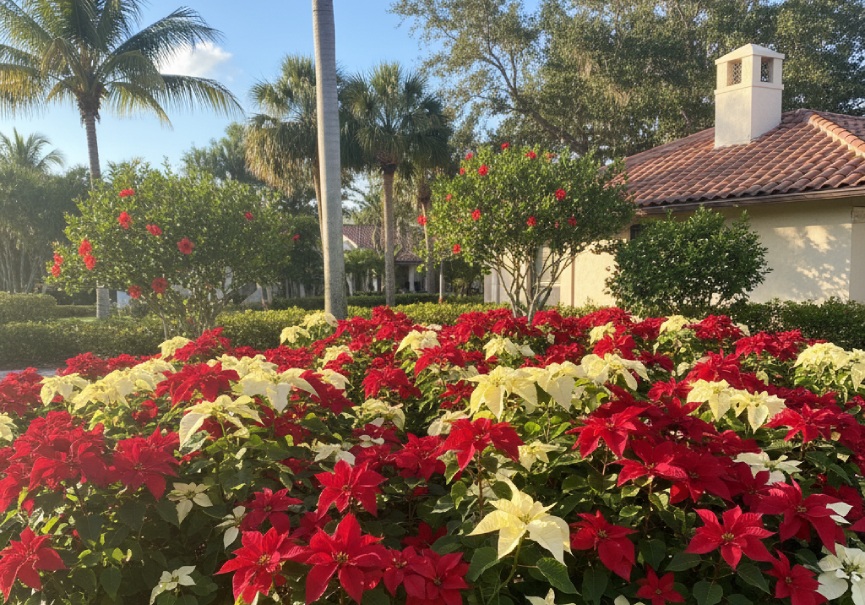How Often to Water Japanese Maple: A Guide to Proper Hydration

Introduction
The Japanese maple tree is like a beautiful artwork in nature with its pretty leaves and graceful shape. It’s a special tree that looks amazing. But taking care of it goes beyond just its looks. Giving it the right amount of water is really important.
In the world of gardening, knowing how much water a Japanese maple needs is not just a regular thing to do. It’s like a careful dance that affects how strong and healthy the tree is and how long it lives. Every drop of water that goes to the roots helps the tree stay alive, grow, and look good. If you love taking care of gardens or trees, it’s up to us to understand this dance – to know how often to water the tree based on what it needs and the different seasons.
Let’s learn together about how often to water a Japanese maple. We’ll talk about things like the weather, the time of the year, and how the tree itself works. This will help us take care of not just the tree’s beauty but also what keeps it alive and well. So, come with us as we learn how to give the right water to these special trees, one drop at a time.
Understanding Japanese Maple Watering Needs:
To keep your Japanese maple tree healthy and looking beautiful, it’s super important to know how much water it needs. There are a few big things that decide how often you should water it.
1. Weather and Where You Live: The weather where you are really matters. If it’s hot and not much rain, you might need to water more often. If it’s cooler and there’s more humidity, you might not need to water as much.
2. Type of Soil and How Water Moves: The kind of soil your tree is in changes how much water it needs. The soil should let water move away so the tree’s roots don’t get too wet. This is really important since the tree’s roots aren’t very deep.
3. How Old and Big the Tree Is: If your tree is young or just planted, it needs more water to make its roots strong. Older trees with more roots can handle not getting water all the time.
4. Steady Water: The tree likes a steady amount of water. If it gets too much or too little, it can get stressed or its leaves might get hurt. Finding the right balance is super important.
5. Changing Seasons: Different times of the year need different amounts of water. When it’s hot and growing in spring and summer, it needs more. When it’s cooler in fall and winter, it needs less.
By knowing all these things about watering your Japanese maple tree, you can give it just the right amount of water to make it grow well and be really pretty in your yard.
How much water does a maple tree need per day
Understanding how much water a maple tree needs each day is essential for its well-being and growth. However, the specific water requirement can vary based on factors such as the tree’s size, age, environmental conditions, and the type of soil it’s planted in.
In general, mature maple trees with established root systems typically need about 25-40 gallons (95-150 liters) of water per week, especially during dry or hot periods. This translates to roughly 3-6 gallons (11-23 liters) per day. For young maple trees or newly planted ones, their water needs might be slightly less, around 10-20 gallons (38-75 liters) per week or 1-3 gallons (4-11 liters) per day.
However, it’s important to emphasize that these are general guidelines and not rigid rules. The actual amount of water required can vary based on factors like the weather, soil type, and drainage conditions. For instance, during rainy periods, you might not need to water your maple tree as often, as it’s getting water from natural sources. Conversely, during hot and dry spells, you might need to increase the frequency of watering.
The key is to ensure that the soil around the tree’s root zone is consistently moist but not waterlogged. Overwatering can be just as harmful as underwatering, as it can lead to root suffocation and other problems. It’s often better to water deeply and less frequently rather than shallowly and frequently, as deep watering encourages the tree’s roots to grow deeper into the soil.
To gauge the moisture level of the soil, you can perform a simple soil moisture test. Stick your finger about an inch into the soil near the base of the tree. If the soil feels dry at that depth, it’s time to water. If it’s slightly damp, you can wait a bit before watering again.
While mature maple trees might need around 25-40 gallons per week and young trees around 10-20 gallons per week, these are general estimates that can vary based on different factors. Regularly checking the soil moisture and adjusting your watering routine according to the tree’s needs and the conditions will help you ensure that your maple tree receives the right amount of water for its health and growth.
General Guidelines for Watering Japanese Maple:
Achieving the optimal watering balance for your Japanese maple is essential for its vitality and allure. By adhering to some general guidelines, you can provide the tree with the right amount of moisture it craves.
Established Trees: For mature Japanese maple trees, a consistent watering routine during the growing season is crucial. This typically translates to deep watering every 7 to 10 days, ensuring the soil around the roots remains consistently moist. During the dormant season, reduce watering frequency while still preventing the soil from completely drying out.
Newly Planted Trees: Young Japanese maple trees require more intensive watering during their initial establishment phase. In the first year, water deeply once or twice a week to encourage robust root development. Monitor soil moisture levels diligently to prevent excessive dryness, which can hinder root growth.
Soil Moisture Assessment: Before reaching for the watering can, it’s essential to assess the soil’s moisture content. Use techniques like the finger test or a moisture meter to gauge how dry the soil is several inches below the surface. Water only if the soil feels dry to the touch.
Adjusting for Climate and Conditions: Tailor your watering schedule to the climate and weather conditions in your area. In hotter and drier climates, you may need to water more frequently, while cooler and humid environments may require less frequent watering. Adapt your routine based on rainfall and temperature changes.
By adhering to these general guidelines, you’ll be well on your way to nurturing a Japanese maple that flourishes in its surroundings, displaying its iconic foliage and enriching your landscape with its captivating presence.
Seasonal Watering Considerations:
Understanding the ebb and flow of seasons is pivotal in determining how often to water your Japanese maple. Adapting your watering routine to accommodate the changing demands of each season ensures the tree’s optimal health and longevity.
How often to water a Japanese maple in summer
During the hot summer, it’s really important to water your Japanese maple tree regularly so it stays healthy and doesn’t get too thirsty. Japanese maples have shallow roots, which means they can dry out faster than other trees. To keep them happy in the warm months, make sure to give them water regularly and think about what they need.
How often you water depends on a few things, like how hot it is, how big your tree is, the kind of soil it’s in, and if it’s in a pot or in the ground. On average, in the summer, it’s a good idea to water Japanese maples around two to three times every week. But you should change this depending on the weather.
If it’s really hot and dry where you live, your Japanese maple might need more water, maybe even every day if the soil is drying out quickly. But if you’re in a cooler place with less sun, you might not need to water as much. The main thing is to keep the soil not too wet and not too dry.
When you water, make sure the water gets to all parts of the ground where the roots are. Watering around the tree’s leaves and a bit farther out is a good way to do this. Also, put the water close to the bottom of the trunk so the tree doesn’t get sick from too much moisture.
Using a soaker hose or a drip system is helpful because they give water slowly and right to the soil, which is good for the tree. If you put stuff like wood chips or straw around the tree’s base, it can help keep the soil wet and stop water from going away too fast.
To figure out when it’s time to water, do a simple test. Stick your finger about an inch into the soil near the bottom of the tree. If it feels dry, that means it’s time to water. But if it still feels a bit wet, you can wait a little more before watering.
So, to sum up, in the summer, it’s usually best to water your Japanese maple tree around two to three times a week. But remember, it can change depending on how hot it is and the soil. Keeping your tree well-watered and happy will help it stay pretty all summer long.
How often to water a Japanese maple in winter
In the winter, the watering needs of your Japanese maple tree change compared to the warmer months. While it’s true that trees generally need less water during the winter, it’s still important to ensure that your Japanese maple receives adequate moisture to prevent dehydration and stress. The approach to watering during the winter should be more cautious and responsive to the specific conditions in your region.
In most cases, you won’t need to water your Japanese maple as frequently during the winter as you do in the summer. This is because the tree’s growth slows down and its water needs decrease. However, if you live in an area with mild winters where the ground isn’t frozen and there’s limited rainfall, you might need to water occasionally to keep the soil from becoming too dry.
A good rule of thumb for winter watering is to check the soil moisture. Stick your finger about an inch into the soil near the base of the tree. If the soil feels dry, it’s time to water. But if it’s still slightly damp, you can wait a bit longer before watering again. Remember, it’s better to keep the soil slightly moist but not waterlogged.
One thing to be cautious about is overwatering in winter. If the ground is frozen or if the temperatures are consistently below freezing, excess water can freeze around the roots and damage them. So, if you’re uncertain about whether to water, it’s safer to err on the side of caution and water less.
Mulching around the base of the tree with a layer of organic material, like wood chips or straw, can also help retain moisture and protect the roots from extreme temperature changes. This extra layer of insulation can be especially helpful in regions with cold winters.
While Japanese maples generally require less water in the winter, it’s essential to monitor the soil moisture and adjust your watering schedule accordingly. Checking the soil, considering your local climate, and being cautious about overwatering are key to ensuring the health and well-being of your Japanese maple during the colder months.
Watering Techniques for Japanese Maple:
Learning how to water your Japanese maple tree the right way is really important to help it stay beautiful and healthy. By using the right methods, you can give it the right amount of water and avoid problems.
1. Deep Watering vs. Shallow Watering: It’s better to give the tree lots of water deep down in the soil instead of just on the surface. When you water deeply, the roots go down and make the tree stronger. If you water only on the surface, the roots might stay near the top and could get dry or hurt.
2. Drip Irrigation and Soaker Hoses: You can use special tubes or hoses that drop water right where the tree’s roots are. This helps the tree get water directly and stops water from going where it shouldn’t. It also helps keep the leaves dry, which is good because wet leaves can get sick.
3. When to Water: It’s best to water the tree early in the morning or late in the afternoon. At these times, the tree can take in water well without losing too much to the sun. Avoid watering at night because the tree might stay wet, and that can make it sick.
4. Keep Watering the Same: To stop the tree from getting stressed, water it at the same times every time. Changing when you water can make the leaves dry or the tree look weak. Keeping it steady helps the tree grow nice and strong.
5. Watch and Change: Even though there are good rules, always watch how your tree acts after you water. Things like how hot it is, what soil you have, and other things around the tree can change what it needs. Be ready to give it more or less water if it’s not doing well.
By knowing how to water your Japanese maple tree in the right way, you can make it happy and pretty for a long time.
Signs of Overwatering and Underwatering:
Recognizing the telltale signs of overwatering and underwatering is crucial in fine-tuning your Japanese maple’s watering regimen. These signs offer valuable insights into the tree’s condition, helping you provide the precise moisture it needs for optimal health.
Signs of overwatering a maple tree
It’s really important to know how to tell if your maple tree is getting too much water. When a maple tree gets more water than it needs, it can have problems that affect how it grows and stays healthy.
One sign that your tree might be getting too much water is if its leaves start to droop or turn yellow. This might seem strange because we think too much water should be good, but actually, it can make the roots not get enough air. The water fills up the spaces in the dirt, and the roots can’t breathe well. This can make the leaves look sad and yellow or even make them start to wilt.
You might also see strange stuff like mold or funny-looking growths near the bottom of the tree or on the leaves. Too much water can make it a cozy place for things like mold and bad germs to grow. If you see spots or colors on the leaves that aren’t normal, it could mean the tree has too much water.
Something else to watch out for is if your tree’s roots stay close to the top of the soil. When the soil is always wet, the roots might not want to grow deep into the ground to find water. This can make the tree weak and not able to handle tough weather.
Believe it or not, having too much water can even bring more bugs to your tree. Bugs like fungus gnats and bad germs that hurt the roots can show up when there’s too much water around.
Lastly, if you notice the bark on your tree looks odd – maybe it’s changing color, feeling mushy, or peeling away – that could mean there’s too much water around the roots.
To stop this from happening, it’s good to water your tree based on what it really needs. You should think about the weather, the kind of soil, and how much water the tree really likes. Also, make sure the soil can drain well so that extra water doesn’t stay around the roots.
In short, look for drooping or yellow leaves, weird stuff on the leaves, shallow roots, more bugs, and strange bark. If you see these things, your maple tree might be getting too much water. Changing how you water and letting the soil drain well can help your tree stay healthy and strong.
Signs of underwatering a maple tree
Knowing when your maple tree is not getting enough water is super important for keeping it happy and strong. If a maple tree doesn’t get the water it needs, it can have problems that make it hard for it to grow well.
One thing you might see is the leaves drooping or bending down. This happens because when the tree doesn’t have enough water, it can’t bring the food it needs from the roots to the leaves. So the leaves start to look sad and might even curl up. They can also get really dry and easy to break. Sometimes, they might even turn brown and fall off.
You might also notice the edges of the leaves looking crispy, like they’ve been burnt. This happens because when there’s not enough water, the cells in the leaves start to dry up and die. The crispy edges are a sign that your maple tree is thirsty.
Another thing to watch for is if the tree is not growing like it should. Water helps the tree make its food, and if it doesn’t get enough, it can’t grow well. This can make the leaves smaller, there might not be as many new branches, and the whole tree might look smaller.
The dirt around the tree can also give you clues. If the dirt is really dry and it’s pulling away from the sides or making big cracks, it’s a sign that the tree isn’t getting enough water.
To make sure your tree needs water, you can do a simple test. Stick your finger about an inch into the dirt near the bottom of the tree. If the dirt feels dry, it’s time to water. But if it’s a little damp, you can wait a bit before watering.
It’s really important to water your maple tree just right. You want to give it enough water to keep it healthy, but not too much that it gets too wet. Changing how much you water based on the weather and what your tree likes is a good way to take care of it.
To sum it up, looking out for drooping leaves, crispy edges, slow growth, and dry dirt can help you know when your maple tree needs more water. Checking the dirt often and watering when it’s needed will help your tree stay strong and happy.
Balance and Vigilance Understanding these signs enables you to strike a balance between overwatering and underwatering. Regularly monitor your Japanese maple for these symptoms, particularly during periods of extreme weather or when adjusting your watering routine. By responding promptly to these cues, you can refine your watering practices and provide tailored care to your tree.
Adjusting Watering Practices:
Fine-tuning your Japanese maple’s watering practices requires a dynamic approach that considers varying conditions and the tree’s evolving needs. Adapting your routine ensures that your tree receives the ideal moisture for its growth and well-being.
Changing Weather Conditions
1. Hot and Dry Spells: During heatwaves or dry periods, increase watering frequency to prevent moisture stress. Keep an eye on the soil moisture and adjust as needed to counteract excessive evaporation.
2. Rainfall: Reduce or temporarily halt watering when ample rainfall occurs. Let the natural precipitation provide moisture to the tree and gauge whether additional watering is necessary.
Tree Age and Size
1. Young Trees: Newly planted or young Japanese maples require more attention. Gradually adjust the watering routine as the tree’s root system establishes itself, but continue to provide consistent moisture for growth.
2. Mature Trees: Older trees with established root systems can tolerate minor variations in watering frequency. Observe how they respond to changing conditions and adjust watering accordingly.
Soil Drainage
1. Sandy Soils: Well-draining sandy soils might necessitate more frequent watering due to their faster drainage properties.
2. Clay Soils: Heavier clay soils hold moisture longer, so be cautious not to overwater. Monitor the soil’s moisture content regularly to prevent waterlogged conditions.
Regular Monitoring and Flexibility Maintain vigilance in observing your Japanese maple’s response to your watering adjustments. The tree’s health, foliage appearance, and soil moisture levels all provide valuable cues. Be prepared to adapt your watering practices based on these observations, ensuring that your tree receives personalized care that aligns with its unique requirements.
How often to water a Japanese maple in a container
Determining how often to water a Japanese maple tree in a container is essential to maintain its health and beauty. Container-grown trees have different water needs compared to those planted in the ground due to their limited access to water and nutrients.
The frequency of watering a Japanese maple in a container can vary based on factors like the size of the container, the type of soil, the weather conditions, and the tree’s growth stage. As a general guideline, during the growing season, which is typically spring through early fall, you should aim to keep the soil consistently moist but not waterlogged.
A good rule of thumb is to check the moisture level of the soil with your finger about an inch below the surface. If the soil feels dry at that depth, it’s time to water. If it’s still slightly damp, you can wait a bit before watering again.
In warmer and drier climates, container-grown trees might need more frequent watering. You might need to water them every 1-2 days, especially during hot spells. On the other hand, in cooler and more humid climates, you might be able to water less often, perhaps every 3-4 days.
It’s important to avoid letting the soil in the container completely dry out, as this can stress the tree and affect its health. Conversely, overwatering can lead to root rot and other issues. Using well-draining soil and a container with good drainage holes can help prevent water from accumulating at the bottom and ensure that the roots have access to oxygen.
During the winter months, when the tree is dormant, its water needs decrease. You should water less often, but still make sure the soil doesn’t become bone dry.
To sum it up, the frequency of watering a Japanese maple tree in a container depends on factors like the climate, container size, and soil type. Regularly checking the soil moisture and adjusting your watering routine based on the tree’s needs will help you maintain a healthy and thriving container-grown Japanese maple throughout the year.
Conclusion
Caring for a Japanese maple tree is like a special dance between art and science, more than just regular gardening. Figuring out how often to water it is like a beautiful song that combines knowing about the environment, how the tree works, and how to take care of it. By learning about the different seasons, the kind of soil, and what your tree needs, you’ll find the secret to making your Japanese maple tree grow really well and look amazing.
But remember, while rules are good, there’s no one perfect answer. Your tree is like a living painting, and how you take care of it helps it grow strong and stay healthy. With each drop of water you give, you’re helping the tree’s roots and making its top part look great.
As you take care of your Japanese maple tree, keep watching and learning. Listen to what the leaves say, pay attention to the weather, and change how you water when needed. By using what you know and what you feel, you become someone who takes care of this amazing tree. This way, it’ll keep looking wonderful and make your place feel like a bit of nature’s beauty.
FAQ
1. Can I use a sprinkler to water my Japanese maple? Ans:- It’s best to avoid wetting the foliage. Watering at the base of the tree using a soaker hose or drip irrigation is preferable.
2. How can I tell if I’m watering too much? Ans:- If the soil feels consistently soggy, and the leaves are yellowing or showing signs of fungal issues, you might be overwatering.
3. Is rainwater better than tap water for Japanese maples? Ans:- Rainwater is generally preferable because it’s naturally soft and free from chlorine and minerals. However, tap water can be used if it’s allowed to sit for a day to dissipate chlorine.
4. Can I use a moisture meter to determine when to water? Ans:- Yes, a moisture meter can be a helpful tool to gauge soil moisture levels and determine when to water.
5. Should I water my Japanese maple during the winter months? Ans:- Generally, Japanese maples require less water during the dormant winter period. Water only if the weather is unusually dry and the soil becomes dry as a result.






